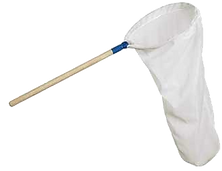Meeting February 18: Impacts of invasive barberry, honeysuckle, autumn olive, and burning bush
CES is pleased to announce our February speaker! Meetings are still on Zoom (email ctentsoc@gmail.com for link) and social starts at 6:30 and meeting at 7:30pm. Hope to see you there!
Speaker: Robert Clark
When: 7:30pm on February 18, 2022
Title: Impacts of invasive barberry, honeysuckle, autumn olive, and burning bush on arthropod food webs. Which is the lesser of four evils?
Abstract: Invasive plants are widespread and abundant in the Northeast, potentially causing significant changes to ecological communities. We expect invasive plants are lower-quality food and poorer microhabitats for native insects than native plants. We also assume invasive plants support a lower abundance and diversity of insects which can then have cascading impacts on food webs, reducing availability of resources for wildlife, such as migratory songbirds. However, there has been surprisingly little research in North America on the effects of non-native plants on arthropods and other wildlife. The goal of our project is to determine which invasive plants are the "worst offenders" with respect to negative impacts on food webs. At Great Hollow Nature Preserve & Ecological Research Center in New Fairfield CT, we have recently completed a large field experiment studying arthropods and bird predation effects on both native and non-native, invasive plants. In parallel with a selective bird exclusion experiment, we measured the diversity and biomass of invertebrates on ten plant species. Our study included six native plants (black birch, beech, musclewood, shadbush, striped maple, and witch-hazel) as a point of comparison, and four "infamous" invasive shrubs (Japanese barberry, Asian honeysuckles, autumn olive, and burning bush). Our data show that some non-native shrubs, like barberry, are very poor hosts for most arthropod groups compared to native Connecticut plants. Contrary to our expectations, however, we saw relatively high biomass of invertebrates on invasive honeysuckle. While caterpillars were relatively rare on all invasives, we saw a surprisingly large number of herbivorous Hemipterans (e.g., Miridae), Orthoptera (Tettigoniidae), and Coleoptera (e.g., Curculionidae) on these same invasive hosts. Branch-dwelling spiders were actually more abundant on invasive plants compared to our reference native plants. To our surprise, bird foraging intensity on the total invertebrate community was of roughly equal magnitude between native and non-native plants. This suggests that while invasive shrubs are poor hosts for some herbivorous insects, they still retain some food resources that insectivorous birds are actively consuming. Our results point towards an invasive species management strategy that prioritizes removal of low-quality host species if the goal is improving habitat for songbirds.
Bio: Rob Clark is a born-and-raised Connecticut entomologist based out of New Fairfield, CT. He works as a Research Scientist at Great Hollow Nature Preserve & Ecological Research Center and as is the founding data scientist of EcoData Technology LLC.








Comments